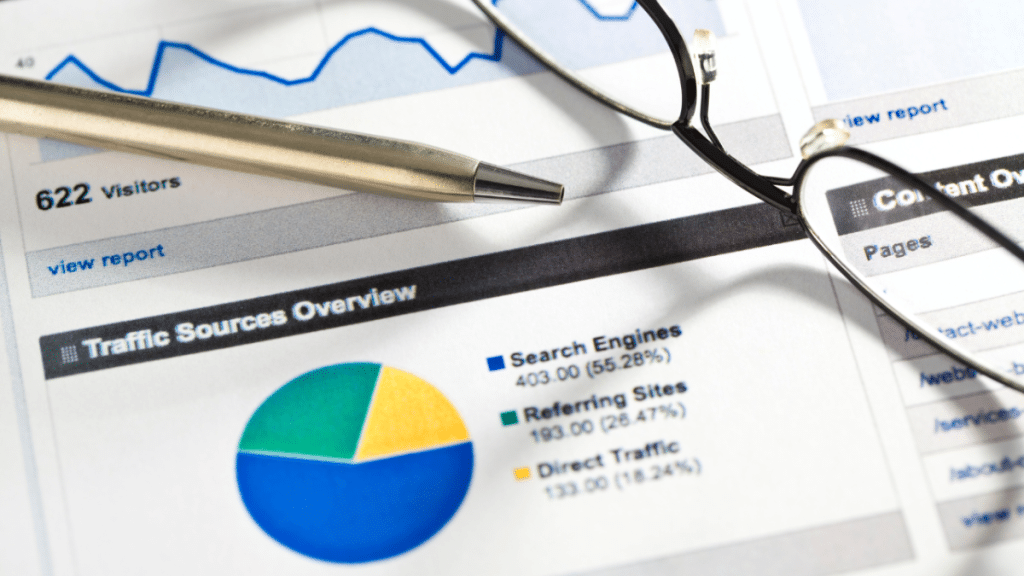Traffic is crucial in the realm of digital marketing. It’s how customers find you, engage with your content, and decide whether to trust your brand. Two main types of website traffic dominate the conversation: organic traffic and paid traffic. While both have their place in a marketing strategy, organic traffic offers deeper, long-term value that paid traffic simply can’t match.
Below, we break down exactly why organic traffic is more valuable than paid traffic, highlighting key differences and advantages to help you prioritize smarter.
What Is Organic Traffic?
Visitors that find your website through organic search results are referred to as organic traffic. This usually happens when someone searches a question, product, or topic on a search engine like Google, and your page appears in the results without you paying for that placement.
Organic traffic is earned by creating quality content, optimizing it for search engines (SEO), and building trust over time. It doesn’t require an ad budget to keep it running—only effort and consistency.
What Is Paid Traffic?
Paid traffic, on the other hand, comes from advertising. This could be Google Ads, social media ads, display banners, or any other form of paid promotion. You pay to appear in front of users, whether or not your content is the best match for their search or interest.
While paid traffic can bring in results quickly, it only lasts as long as your budget does. Once you stop paying, the traffic stops flowing.
Organic Traffic Builds Long-Term Value
One of the biggest advantages of organic traffic is its long-term impact. A well-optimized article or product page can rank on Google for months—or even years—after it’s published. This means it keeps bringing in traffic, leads, and conversions without you having to spend more money.
With paid traffic, you’re essentially renting space. As soon as the campaign ends, your visibility drops. But with organic traffic, you’re building digital real estate that keeps generating returns.
Organic Traffic Earns Trust
People trust organic search results more than paid ads. In fact, research shows that many users skip over ads and go straight to the organic listings. That’s because showing up in organic search means your content has earned its spot—it wasn’t bought.
When users see your site ranking high without ads, it signals credibility. It shows that your content is relevant, valuable, and trusted by others. And trust is a major factor in turning visitors into customers.
Lower Cost, Higher ROI
While organic traffic does require an upfront investment in content creation and SEO, it’s far more cost-effective in the long run. Once your content ranks, you don’t need to keep spending money to keep it visible. That’s the opposite of paid traffic, where costs can pile up fast—especially in competitive industries.
Over time, the return on investment (ROI) for organic traffic tends to be much higher. Every click you get is essentially free after your initial investment, unlike with paid traffic, where every click costs money no matter what.
The Golden Rule of SEO Favors Organic Growth
The golden rule of SEO is simple: create content that is useful, relevant, and easy to find. Following this rule not only improves your rankings—it aligns with how people actually search and engage online.
SEO-driven content answers real questions, solves problems, and provides value. When you commit to this approach, you’re naturally boosting your chances of earning organic traffic. You’re playing the long game, and it pays off.
Paid traffic, by contrast, often skips over the user’s actual needs. It pushes messages instead of attracting with relevance. That’s a big difference in approach—and it shows in the quality of traffic you get.
Organic Visitors Are More Engaged
Visitors who arrive through organic search are usually more motivated. They’re actively looking for something and found your content through a search that matched their intent. That makes them more likely to stick around, read more, or buy something.
Paid traffic can bring in curious clicks, but not always from people who are truly interested. Ads may be shown to people outside your core audience or to those who are just browsing. That leads to higher bounce rates and lower conversion rates compared to organic traffic.
Data and Insights Are More Reliable
When traffic comes organically, it’s easier to understand what’s working. You can track keywords, content performance, and user behavior without the noise of ad targeting or audience manipulation. This helps you make better decisions based on real interest—not just ad metrics.
With paid traffic, it can be hard to tell if users clicked out of curiosity or because your ad placement tricked them. Organic traffic gives you cleaner, more actionable data.
Organic Traffic Supports Your Brand Strategy
Building organic traffic forces you to focus on content quality, user experience, and search intent—all things that strengthen your brand over time. It encourages you to build authority in your field and position your site as a reliable source of information or products.
Paid traffic doesn’t build authority; it buys attention. If you rely on ads alone, you’re not building a sustainable brand—you’re just chasing clicks.
Conclusion: Invest Where It Counts
Organic traffic takes more time and effort to build, but its value goes far beyond temporary results. It earns trust, saves money over time, provides reliable data, and drives meaningful engagement. It also aligns perfectly with the golden rule of SEO, ensuring your content stays relevant and impactful.
